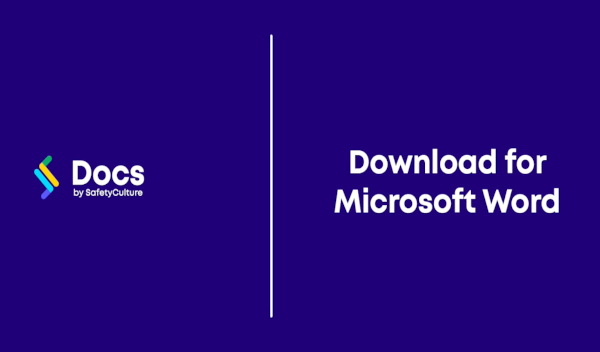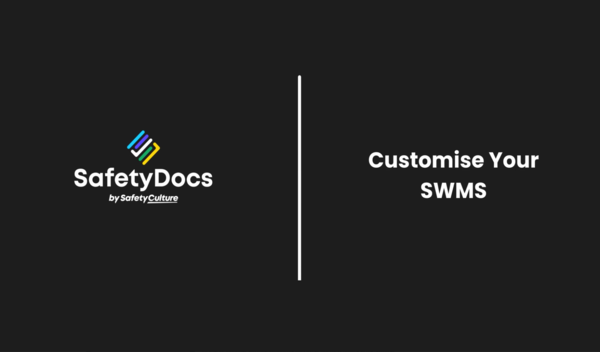Height Access Equipment Safe Work Method Statement
- Instant Document Delivery via Email.
- Add to your existing management system.
- Can assist in ensuring workers are adequately trained.
- Customisation instructions provided.
- Microsoft Word Format (Fully editable).
- Only pay once (no subscriptions required).
Height Access Equipment Safe Work Method Statement (SWMS)
Working at height is one of the most dangerous activities in construction. It's important to follow safety controls and use the right equipment when working at height. This Height Access Equipment SWMS covers all hazards and controls associated with working on fixed scaffolding, erecting and working on mobile and trestle scaffolds, extension, vertical ladders, platform ladders, and using fall arrest systems (the safety harness).
Job Steps Covered in Height Access Equipment SWMS
- Arrival On-site and Assess On-site Conditions: Ensuring safe vehicle positioning and conducting site-specific inductions.
- Work Area Set-up: Implementing fall protection and inspecting work surfaces for safety.
- Conduct a Risk Assessment: Evaluating potential hazards and adopting appropriate control measures for working at height.
- Environment: Managing environmental impacts, including noise, waste, and chemical spills.
- Housekeeping: Maintaining a clean and safe work area to prevent slips, trips, and falls.
- Manual Tasks: Addressing risks associated with manual handling to prevent musculoskeletal injuries.
- Working at Height on Fixed Structures: Ensuring edge protection and safe access to prevent falls.
- Working on Vehicles/Mobile Plant: Adopting safe practices for mounting and dismounting equipment.
- Working at Height using a Fall Arrest System: Implementing and maintaining fall arrest systems correctly.
- Working at Height on Fixed Scaffold: Ensuring scaffold safety and proper load management.
- Working at Height on Mobile Scaffolding and Trestles: Safe use and movement of mobile scaffolding and trestles.
- Working at Height > 2m on Extension or Single Ladder: Safe use of ladders and maintaining a safety zone.
- Working on Platform Ladders: Ensuring platform ladder safety and correct use.
- Using Vertical Ladders: Safe use of vertical ladders with appropriate safety checks.
- General Work at Height: Implementing general safety measures for all work at height.
- On Completion: Securing the site and equipment after completion of work.
- Emergency Response: Outlines a response to emergencies.
Each purchase of our SWMS comes with a complimentary copy of the Legislation & Codes of Practice Reference List, valued at $19.95. This valuable resource provides an up-to-date overview of relevant laws and standards, further supporting your compliance efforts.
Key Features of the SWMS
- Regulatory Compliance: Helps to ensure adherence to Australian safety legislation.
- Hazard Management: Identifies potential hazards and outlines control measures to mitigate risks.
- Comprehensive Risk Assessment: Guides through assessing risks associated with working at height.
- Emergency Response: Includes a response for emergencies and injury management.
Who is it Suitable For?
This SWMS is essential for businesses and workers involved in construction, maintenance, or any activities requiring height access equipment, ensuring safety and compliance.
Ensure your team is equipped with the knowledge and tools to work safely at height. Get your copy today and commit to workplace safety.
- Instant Document Delivery via Email.
- Add to your existing management system.
- Can assist in ensuring workers are adequately trained.
- Customisation instructions provided.
- Microsoft Word Format (Fully editable).
- Only pay once (no subscriptions required).
Height Access Equipment Safe Work Method Statement (SWMS)
Working at height is one of the most dangerous activities in construction. It's important to follow safety controls and use the right equipment when working at height. This Height Access Equipment SWMS covers all hazards and controls associated with working on fixed scaffolding, erecting and working on mobile and trestle scaffolds, extension, vertical ladders, platform ladders, and using fall arrest systems (the safety harness).
Job Steps Covered in Height Access Equipment SWMS
- Arrival On-site and Assess On-site Conditions: Ensuring safe vehicle positioning and conducting site-specific inductions.
- Work Area Set-up: Implementing fall protection and inspecting work surfaces for safety.
- Conduct a Risk Assessment: Evaluating potential hazards and adopting appropriate control measures for working at height.
- Environment: Managing environmental impacts, including noise, waste, and chemical spills.
- Housekeeping: Maintaining a clean and safe work area to prevent slips, trips, and falls.
- Manual Tasks: Addressing risks associated with manual handling to prevent musculoskeletal injuries.
- Working at Height on Fixed Structures: Ensuring edge protection and safe access to prevent falls.
- Working on Vehicles/Mobile Plant: Adopting safe practices for mounting and dismounting equipment.
- Working at Height using a Fall Arrest System: Implementing and maintaining fall arrest systems correctly.
- Working at Height on Fixed Scaffold: Ensuring scaffold safety and proper load management.
- Working at Height on Mobile Scaffolding and Trestles: Safe use and movement of mobile scaffolding and trestles.
- Working at Height > 2m on Extension or Single Ladder: Safe use of ladders and maintaining a safety zone.
- Working on Platform Ladders: Ensuring platform ladder safety and correct use.
- Using Vertical Ladders: Safe use of vertical ladders with appropriate safety checks.
- General Work at Height: Implementing general safety measures for all work at height.
- On Completion: Securing the site and equipment after completion of work.
- Emergency Response: Outlines a response to emergencies.
Each purchase of our SWMS comes with a complimentary copy of the Legislation & Codes of Practice Reference List, valued at $19.95. This valuable resource provides an up-to-date overview of relevant laws and standards, further supporting your compliance efforts.
Key Features of the SWMS
- Regulatory Compliance: Helps to ensure adherence to Australian safety legislation.
- Hazard Management: Identifies potential hazards and outlines control measures to mitigate risks.
- Comprehensive Risk Assessment: Guides through assessing risks associated with working at height.
- Emergency Response: Includes a response for emergencies and injury management.
Who is it Suitable For?
This SWMS is essential for businesses and workers involved in construction, maintenance, or any activities requiring height access equipment, ensuring safety and compliance.
Ensure your team is equipped with the knowledge and tools to work safely at height. Get your copy today and commit to workplace safety.


